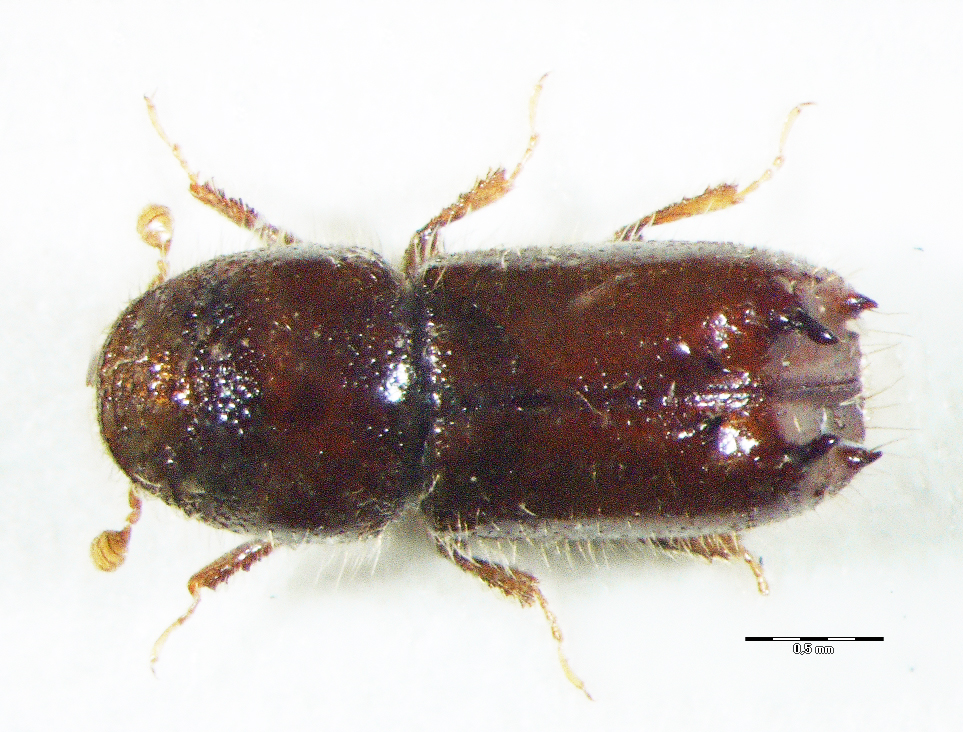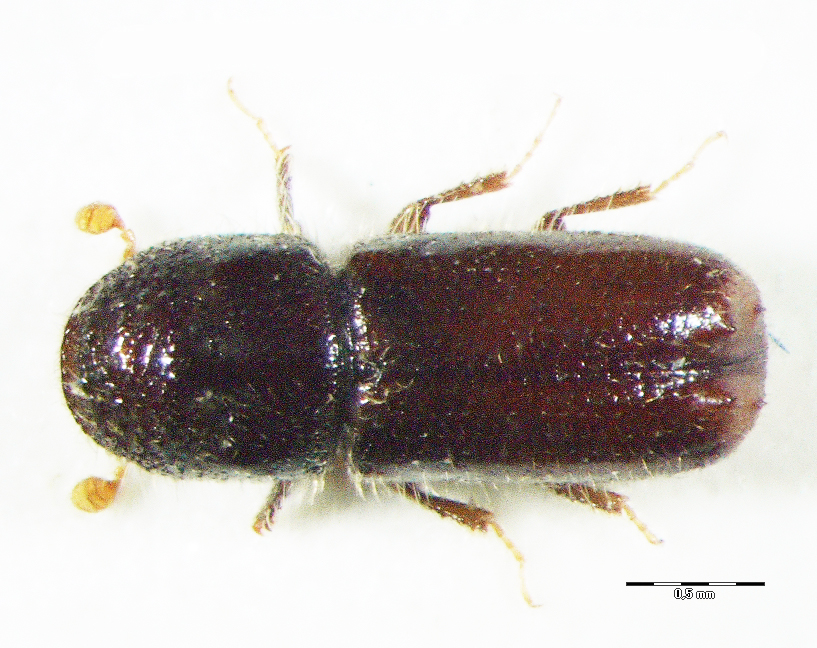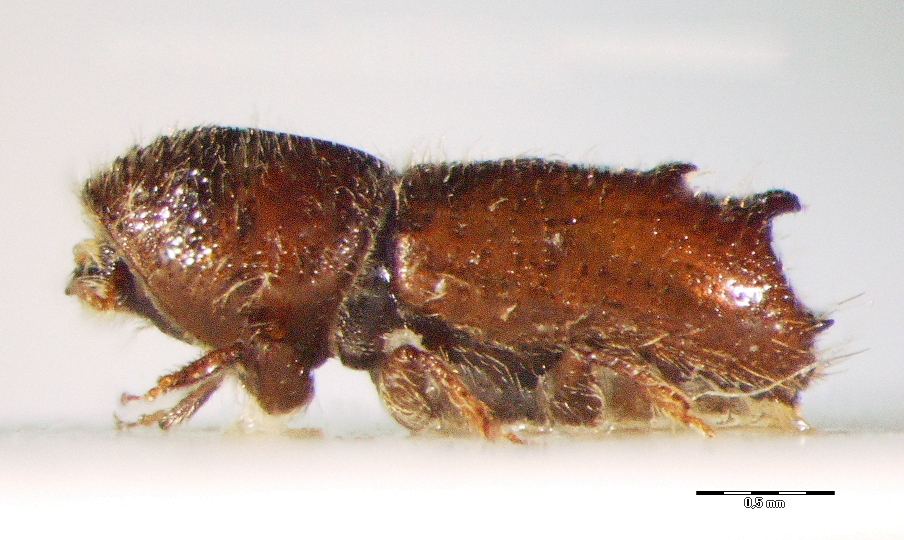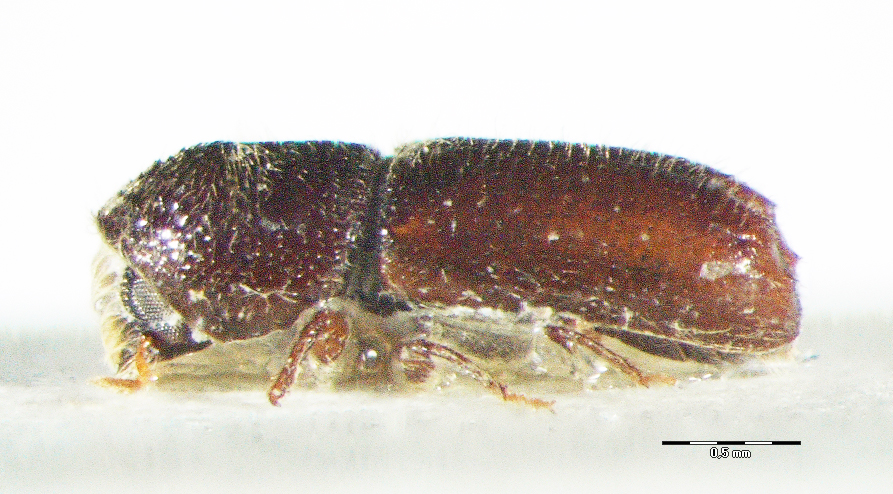30.02. Pityogenes bistridentatus (Eichhoff, 1878)
Presence
E: AL AU BH BU CR CZ FR GE GR HU IT MC PL RO SK SL SP ST SZ UK YU
A: CY JA NE TR
Figure 134: Pityogenes bistridentatus (above: male – dorsal, lateral, below: female – dorsal, lateral) (Photo: Maja Jurc)
Older catalogs and keys – citations of name
Grüne 1979: Pityogenes bistridentatus Eichhoff, 1879; Freude, Harde, Lohse 1981: P. bistridentatus Eichhoff; Titovšek 1988: P. bistridentatus (Eichhoff); Pfeffer & Knížek 1993: P. bistridentatus (Eichhoff, 1879); Pfeffer 1995: P. bistridentatus (Eichhoff, 1878).
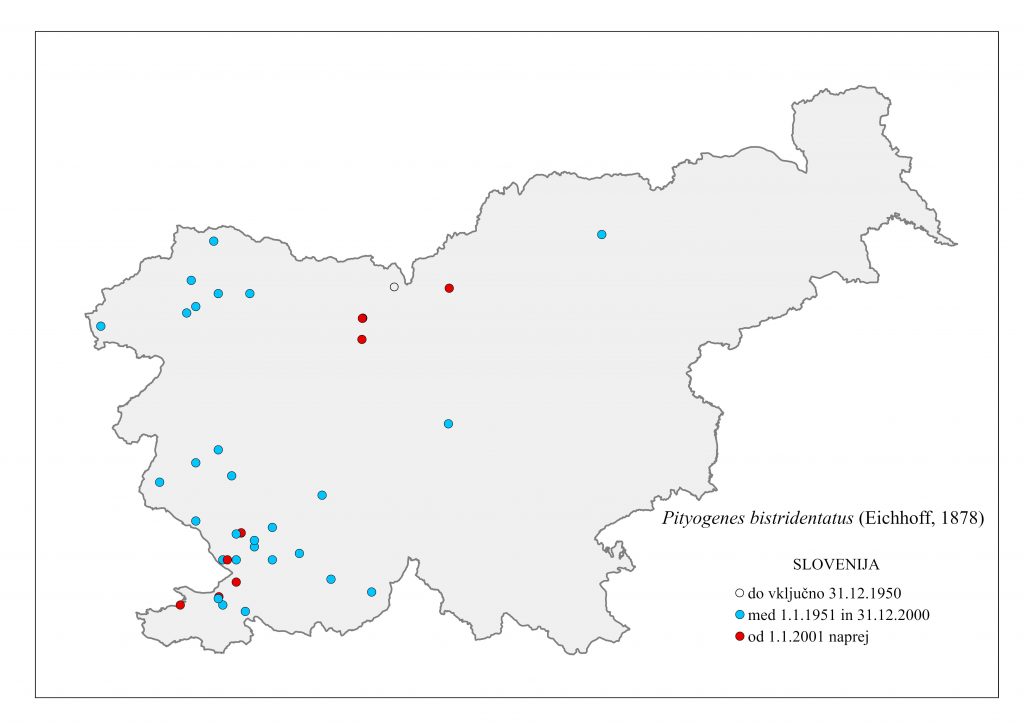
Figure 135: Pityogenes bistridentatus, distribution map according to historical and recent data
Ecology and presence in Slovenia
The species is present in southern central Europe, the Balkans, the European part of the former Soviet Union and Asia. It is present throughout Slovenia, with the exception of the NE (Figure 135). Hosts are European and Asian pine species, less frequently Larix decidua, Abies spp. and Picea spp.. In Slovenia, the species has been found on Pinus sylvestris, P. nigra, P. mugo and P. pinea, but only once on Abies alba. In Gorenjska it is often caught in traps. Polygamous, it develops two generations per year and swarms in May and July. The tunnel system is star-shaped, with 5-7 maternal galleries. Adult length is 2.2-2.8 mm. Males have 3 denticles on the elytra apex on each side, the second being the largest and curved strongly downwards. The first (sutural) denticle, close to the middle one, is also well developed and curved. The third denticle is conical. The females have 2 distinct humps on elytra margin (Figure 134). It is a secondary species which can become primary under favourable conditions and is a threat especially to pine pole stands. Pheromone: 1-Hexanol in (Gerken 1977).

